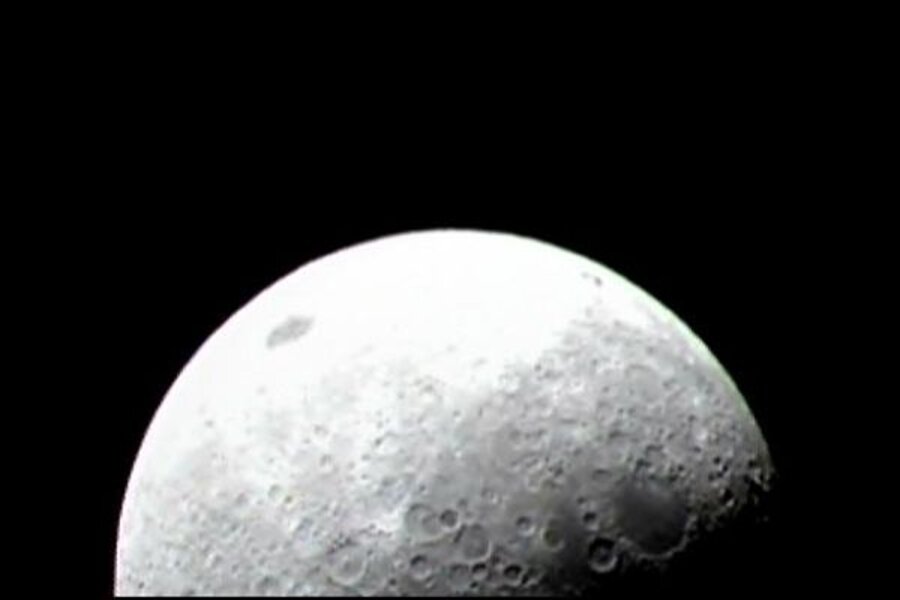NASA's tandem spacecraft reach the moon
Loading...
OK, so this isn't the prettiest picture of the moon you've ever seen.
But to a team at NASA's Ames Research Center, it's sweet confirmation that their contribution to the space agency's tandem Lunar Reconnaissance Orbiter/LCROSS mission is alive and kicking -- and behaving like a champ.
For the record, this is a LCROSS snapshot -- taken with a camera that's part of an instrument/guidance package tacked on to the upper stage of the rocket that launched the duo on June 18.
In fact the orbiter also has arrived and taken up its orbit around the moon. No more "Are we there yet?"
The orbiter will travel in a highly elliptical orbit for the next 60 days while scientists check out its instruments and key elements of the spacecraft's systems. Then the team will adjust the craft's orbit so that it swings over the poles in a circle a scant 31 miles above the lunar surface for the initial active part of its mission -- the hunt for safe, interesting, resource-rich landing spots for humans when the time comes for astronauts to return.
As for LCROSS? Today's flyby was not just a "we see it" moment. Its successful swing around the moon and back toward Earth was an important step in setting up for its grand finale: a collision with a crater bottom in October.
Among other things, the LCROSS team successfully calibrated their instruments during the lunar fly-around.
LCROSS will make three leisurely orbits around the poles of the Earth-moon system. Then, in its final act, the instrument-guidance package will order the stage to reorient itself so it heads motor-nozzle-first into a TBA crater.
On final approach, the instrument package will separate from the upper stage, then follow it closely enough to cruise through the plume of material the upper stages kicks up when it crashes.
The instrument package will gather data on the plume's contents (mission planners hope to see water ice among the plume's constituents) and beam the results back to scientists on Earth before it too slams into the crater floor.





